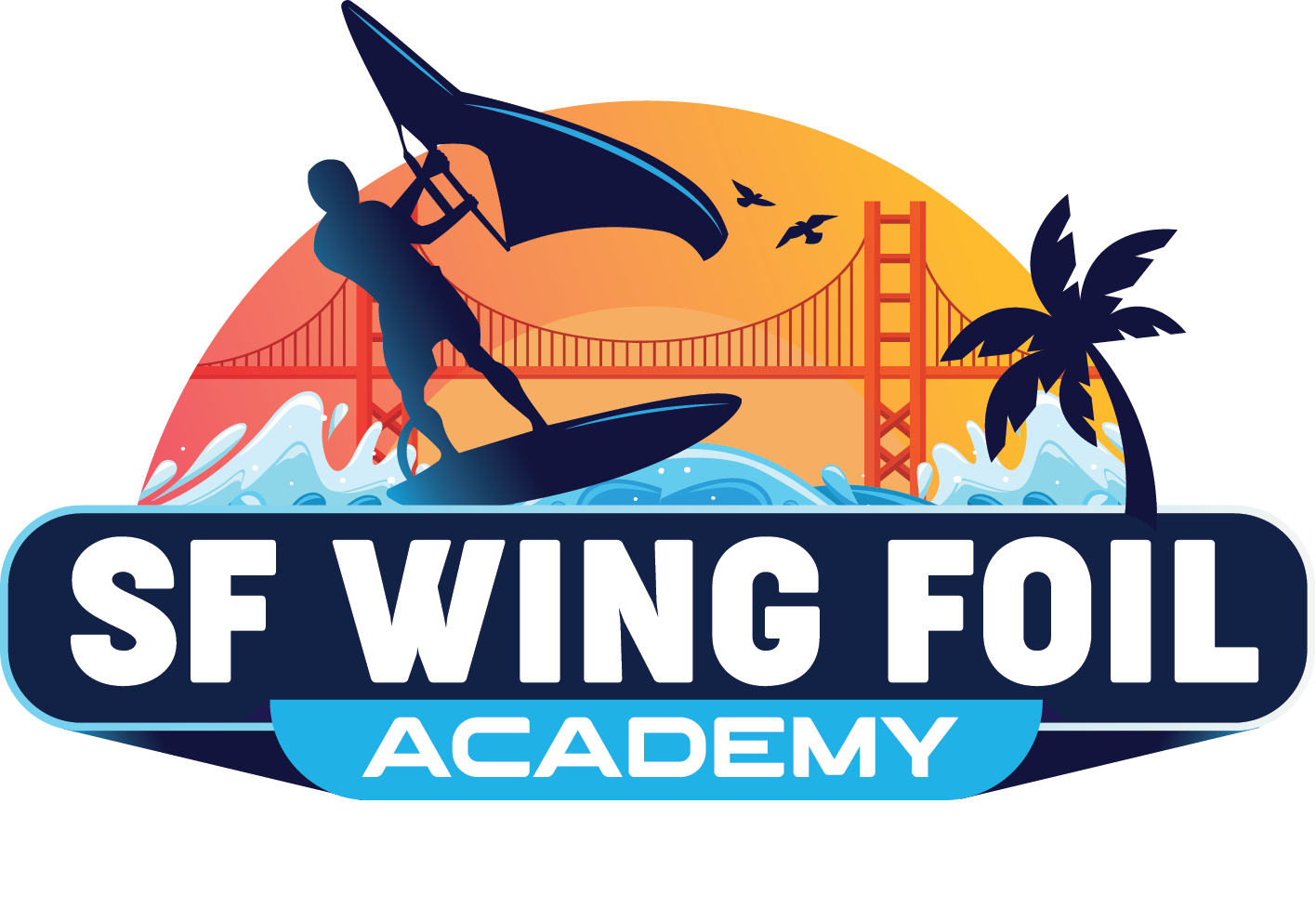Learning to wingfoil can feel overwhelming when you’re starting from scratch. The coordination between wing control, board balance, and foil management seems impossibly complex. However, Captain Joshua Waldman at SF Wingfoil Academy has developed a systematic three-day progression that breaks down this complexity into manageable, achievable goals. Whether you’re considering a single introductory lesson or committing to the full three-day package, understanding this proven progression will help you maximize your learning potential and set realistic expectations for your wingfoiling journey.
The Philosophy Behind the Progression
SF Wingfoil Academy’s approach is built on the principle that sustainable skill development requires proper fundamentals. Rather than rushing students onto foil with poor technique, Waldman’s method prioritizes building correct habits from day one. This foundation-first approach might seem slower initially, but it actually accelerates long-term progress by preventing the need to unlearn bad habits later.
Each day has specific, measurable goals that build systematically toward independent riding ability. The progression acknowledges that wingfoiling involves multiple complex skills that must be developed in the correct sequence. Trying to learn everything simultaneously leads to frustration and plateau, while the structured approach creates consistent breakthrough moments that maintain motivation and momentum.
The San Francisco Bay environment provides an ideal training ground for this progression. The consistent winds, varied conditions, and challenging environment ensure that students who master skills in the bay are well-prepared for wingfoiling anywhere in the world. However, these same conditions demand expert instruction to navigate safely and effectively.
Day One: Foundation and Fundamentals
Wind Awareness and Angles
Your first lesson begins with comprehensive wind education that forms the foundation of all wingfoiling skills. Understanding wind angles isn’t just theoretical knowledge – it’s practical safety and performance information that affects every aspect of your riding. Waldman teaches you to read wind patterns on the water, identify wind shifts, and position yourself for optimal learning conditions.
You’ll learn the relationship between wind direction and your riding options. Points of sail become second nature as you understand how different angles to the wind affect your speed, control, and safety margins. This knowledge proves crucial when you’re eventually riding independently and need to make real-time decisions about positioning and route planning.
Proper Wing Technique
Eliminating bad habits before they become ingrained is a cornerstone of day one instruction. Proper wing holding technique might seem basic, but it’s the foundation that enables all advanced skills. Waldman focuses on hand positioning, arm angles, and body posture that create efficient power transfer while minimizing fatigue.
The wing handling progression starts on land with deliberate practice of different positions and movements. You’ll learn how subtle changes in hand placement affect wing behavior, how to transition between power and neutral positions, and how to maintain control in varying wind strengths. This land-based practice prevents the common mistake of trying to learn wing control while simultaneously managing board balance.
Wing positioning relative to your body becomes intuitive through repetitive practice. The wind window concept – the three-dimensional space where the wing can generate power – is explored thoroughly. You’ll practice moving the wing through different zones, understanding how each position affects power generation, stability, and control.
Strength and Balance Development
Wingfoiling demands specific strength and balance capabilities that differ from other board sports. Day one includes targeted exercises and drills designed to develop these physical attributes while simultaneously building technical skills. The focus isn’t just on getting stronger – it’s on developing the specific muscle memory and coordination patterns that wingfoiling requires.
Balance challenges are introduced progressively, starting with stable platforms and advancing to more dynamic situations. You’ll work on maintaining center of gravity control while managing the wing’s pull, developing the core stability that enables smooth foil transitions.
The First Foil Experience
Day one’s ambitious goal is achieving your first foil flight. While not every student reaches this milestone in their initial lesson, Waldman’s systematic approach maximizes success rates. The progression toward foiling is methodical, building through water starts, board control, and speed management before attempting lift-off.
When foil attempts begin, the focus is on brief, controlled flights rather than extended rides. These initial experiences teach you the sensation of foil lift, the feeling of transitional moments, and the basic control inputs needed for stable flight. Even short flights provide crucial feedback that accelerates subsequent learning.
Day Two: Consistency and Control Development
Extended Foil Time
Building on day one’s foundation, your second lesson focuses on transforming brief foil moments into sustained flights. The emphasis shifts from simply achieving lift to maintaining controlled flight with purpose and direction. You’ll learn to read the foil’s feedback signals and make the subtle adjustments needed for stable, extended rides.
Consistency becomes the primary focus as you work to reduce the variability in your foil attempts. Rather than occasional successful flights mixed with frequent failures, day two aims for predictable, repeatable results. This consistency builds confidence and creates the platform for more advanced skill development.
Depowering and Power Management
Learning to manage the wing’s power output is crucial for maintaining control in varying conditions. Day two introduces specific techniques for depowering the wing when conditions become overwhelming or when you need to reduce speed for safety reasons. This skill is essential for preventing over-powered situations that lead to loss of control.
Power management extends beyond simple depowering to include techniques for optimizing power delivery throughout different phases of your ride. You’ll learn when to increase power for takeoff, how to maintain consistent power during flight, and when to reduce power for safe landings or direction changes.
Fall Reduction and Recovery
While falling is an inevitable part of learning wingfoiling, excessive crashes indicate technique issues that need addressing. Day two focuses on identifying patterns in your falls and implementing specific corrections to improve success rates. This isn’t about avoiding all falls – it’s about making falls more controlled and less frequent.
Recovery techniques become increasingly important as your rides extend. You’ll learn how to recover from minor control losses without crashing, how to regain foil flight after brief touchdowns, and how to manage equipment after falls for quick restarts.
Control Refinement
The second day emphasizes developing nuanced control over your foil flight. This includes learning to make small adjustments to height, speed, and direction while maintaining stable flight. You’ll practice transitioning between different flight modes and managing the foil through varying water conditions.
Directional control becomes more sophisticated as you learn to initiate turns while maintaining foil flight. These skills prepare you for the more advanced maneuvers that will be introduced in day three while building the control foundation needed for independent riding.
Day Three: Advanced Skills and Independence
Sustained Rides and Endurance
Day three represents a significant leap in capability and expectation. Sustained rides become the standard rather than the exception, with sessions lasting minutes rather than seconds. You’ll focus on linking multiple skills together, maintaining foil flight through various maneuvers, and managing energy efficiently for extended sessions.
The endurance aspect isn’t just physical – it’s also mental and technical. Longer rides require sustained concentration, consistent technique, and the ability to make continuous micro-adjustments while maintaining overall control. This builds the foundation for independent practice sessions that can last hours rather than minutes.
Strong and Weak Side Mastery
Most wingfoilers naturally favor one direction over the other, but complete competency requires comfort riding in both directions. Day three specifically addresses this imbalance by identifying your naturally preferred direction and focusing extra attention on developing skills in your weaker direction.
Strong side and weak side riding present different challenges and require slightly different techniques. You’ll learn to adapt your wing positioning, stance adjustments, and control inputs for each direction. This bidirectional competency is essential for independent riding, as wind and water conditions often dictate which direction is most appropriate.
Upwind Ability
Perhaps the most crucial skill for independent wingfoiling is the ability to make ground against the wind direction. Without upwind capability, you’ll constantly drift downwind and struggle to return to your starting point. Day three emphasizes the specific techniques needed for consistent upwind progress.
Upwind riding requires optimization of multiple factors: wing angle, board angle, body position, and speed management. You’ll learn to read wind shifts and adjust your technique accordingly, maintain optimal angles through varying conditions, and make strategic decisions about when to prioritize upwind progress versus other riding objectives.
The progression toward upwind competency is systematic, starting with basic angle optimization and advancing to sophisticated techniques for maximizing upwind performance in challenging conditions. By the end of day three, successful students can maintain or improve their upwind position throughout extended rides.
Integration and Flow
The third day focuses on integrating all previously learned skills into smooth, flowing rides. Rather than treating each skill as a separate element, you’ll learn to transition seamlessly between different techniques and adapt to changing conditions without interrupting your flow.
This integration represents the transition from learning discrete skills to developing actual wingfoiling ability. You’ll practice combining direction changes with power management, linking turns with upwind progress, and managing equipment through complex sequences without losing control or momentum.
Measuring Progress and Success
Each day includes specific benchmarks that indicate successful skill development. Day one success is measured by achieving basic foil flight and demonstrating proper wing technique. Day two progress is evaluated through consistency metrics and control demonstrations. Day three competency is assessed by sustained ride duration, bidirectional ability, and upwind performance.
However, individual progress varies significantly based on previous experience, physical fitness, and learning style. Some students exceed daily expectations while others may need additional time to master specific skills. Waldman’s approach accommodates these differences while maintaining the overall progression structure.
The Single Lesson vs. Three-Day Package Decision
Understanding the three-day progression helps inform your decision about lesson packages. A single introductory lesson provides excellent exposure to wingfoiling and covers day one fundamentals, but achieving true independent riding ability typically requires the complete three-day sequence.
Students who complete the full three-day progression leave with functional wingfoiling skills that enable independent practice and continued development. Those who take single lessons often find themselves wanting more instruction to reach this independence threshold.
Beyond Day Three: Continued Development
The three-day progression creates a solid foundation for independent wingfoiling, but it’s just the beginning of your development journey. Students who complete the program are equipped with the skills needed for safe, enjoyable independent practice and the technical foundation for advanced skill development.
Waldman provides specific guidance for continued progression, including recommendations for practice locations, equipment considerations, and skill development priorities. The goal is creating competent, safe, independent wingfoilers who can continue developing their skills long after formal instruction ends.
Booking Your Progression
Ready to experience this proven learning system? SF Wingfoil Academy’s three-day progression is available through their online booking system at www.sfwingfoilacademy.com. The systematic approach, expert instruction, and San Francisco Bay’s ideal learning conditions combine to create an unmatched wingfoiling education experience.
Whether you choose the single lesson introduction or commit to the complete three-day journey, you’ll be learning from one of the most experienced wingfoil instructors in the world using a proven system that has successfully taught hundreds of students. Your wingfoiling adventure awaits – and now you know exactly what to expect from each step of the journey.


